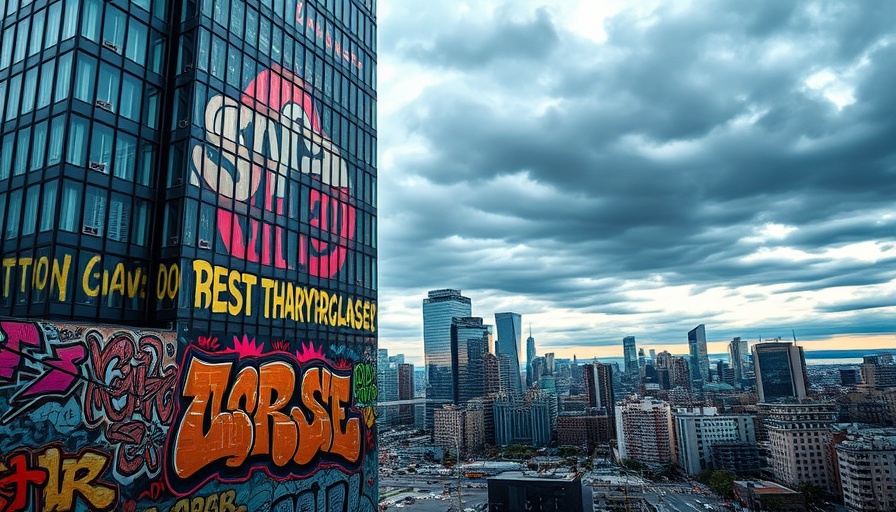
Graffiti Towers in Downtown L.A.: A Visual Blight and Economic Concern
In the vibrant landscape of downtown Los Angeles, the unfinished Oceanwide Plaza development, dubbed the "Graffiti Towers," has become a notorious landmark. With more than 25 stories of graffiti adorning their surfaces, these skyscrapers remain a glaring monument to the stalled ambitions of urban development in a city grappling with economic and social challenges.
The Long Wait for Action
Initially expected to be sold in a bankruptcy auction over a year ago, the fate of Oceanwide Plaza is still in limbo. The delays have been attributed to a mix of high interest rates, a rise in construction costs, and a lack of interested buyers capable of tackling such a monumental project. It serves as an uncomfortable reminder of the potential difficulties developers face in urban renewal, particularly in a market steeped in unpredictability.
Impact on Community Perception
As the 2026 FIFA World Cup and the 2028 Summer Olympics approach, local business leaders express concern that the graffiti sprawled across these towers presents a tarnished image to international visitors. With the towers visible from major thoroughfares and event venues like Crypto.com Arena, they are a visual reminder of something once envisioned as an architectural marvel but now stands as a symbol of decay.
Historical Context: From Promise to Peril
The Oceanwide Plaza project was designed to be a mixed-use development, integrating luxury condominium residences, a high-end hotel, and a retail shopping mall. Once valued at $1.2 billion, the project faced insurmountable financial difficulties in 2019 when the Beijing-based parent company, Oceanwide Holdings, ran out of funds to pay contractors. This abrupt halt has left the structure susceptible to vandalism and disuse, contributing to the area’s decline.
Graffiti as an Artistic Expression vs. Community Deterioration
While some consider the vibrant graffiti to be an expression of urban art, others view it as a sign of neglect. Cassy Horton, co-founder of the DTLA Residents Association, notes the towers signal an openness to mischief, stating, "It's like this beacon that shines and says, 'Come create mischief down here and you won’t get in trouble.'" This duality raises questions about the role of art in public spaces and its effect on community perception and safety.
Future Predictions for Urban Development
The challenges surrounding Oceanwide Plaza offer a glimpse into broader urban planning trends in California. As housing shortages persist, stakeholders are advocating for more aggressive policies that would allow for adaptive reuse of vacant towers like Oceanwide Plaza, potentially transforming them into housing solutions and alleviating some pressures on the local market. As vacant office spaces clutter the skyline amid rising vacancies, the integration of live-work communities could become a focal point for new city ordinances.
Decisions That Homeowners Should Consider
For potential homeowners and current residents being affected by these developments, understanding the implications behind such projects can inform better decision-making. Investing in areas undergoing renewal can yield meaningful returns, particularly if local stakeholders successfully advocate for new housing policies. It’s essential to stay informed about these developments, not only for personal investments but also for community involvement.
Emotional Perspectives: The Human Impact of Urban Blight
For those living nearby, the abandoned towers represent more than just a visual blight; they symbolize a loss of potential and community pride. Many residents yearn for a revitalization of their urban environment that embodies safety and aesthetics—something that could serve as a true reflection of Los Angeles as a bustling, cosmopolitan area. From this perspective, the city’s identity is on the line as the Graffiti Towers loom overhead.
Call to Action: Engaging With Urban Renewal Efforts
As community members and potential homeowners, advocating for progressive urban renewal projects can play a crucial role in reshaping the future of downtown Los Angeles. Attend local town hall meetings, support community organizations pushing for sustainable development, and engage in discussions that focus on collaboratively improving the urban landscape.
 Add Row
Add Row  Add
Add 




Write A Comment